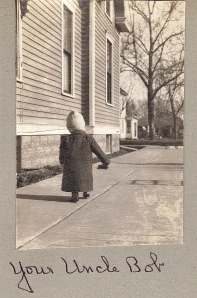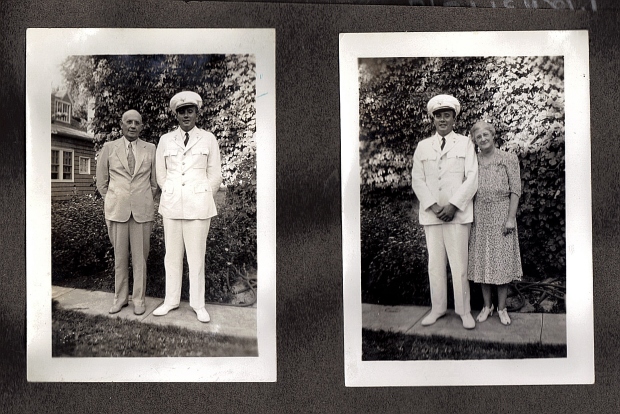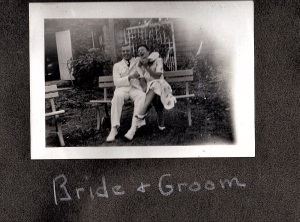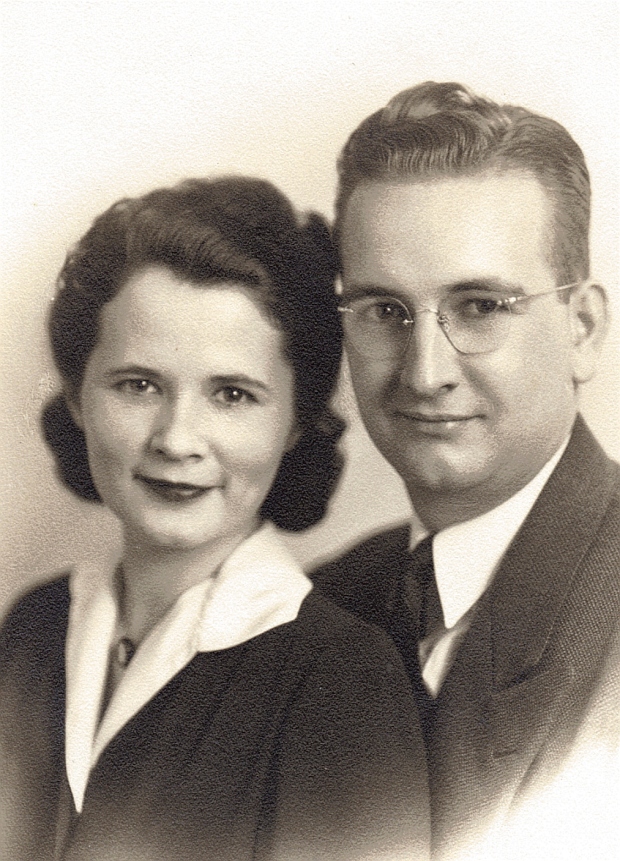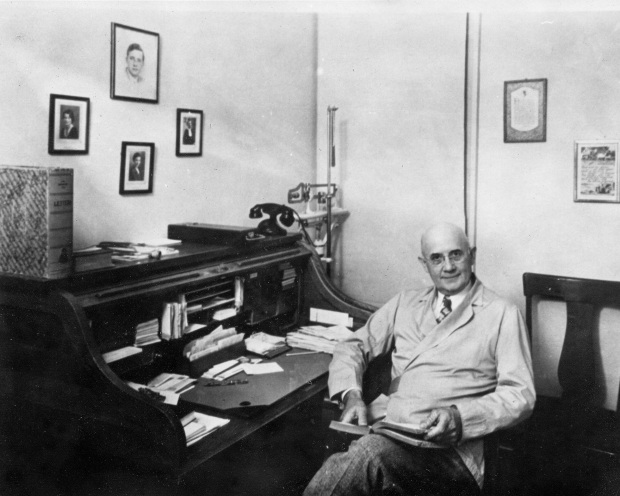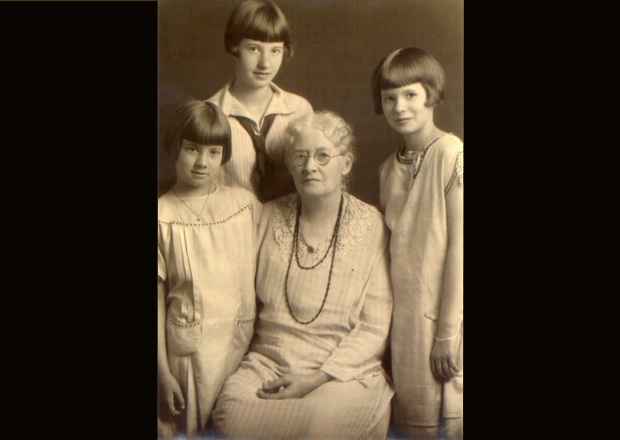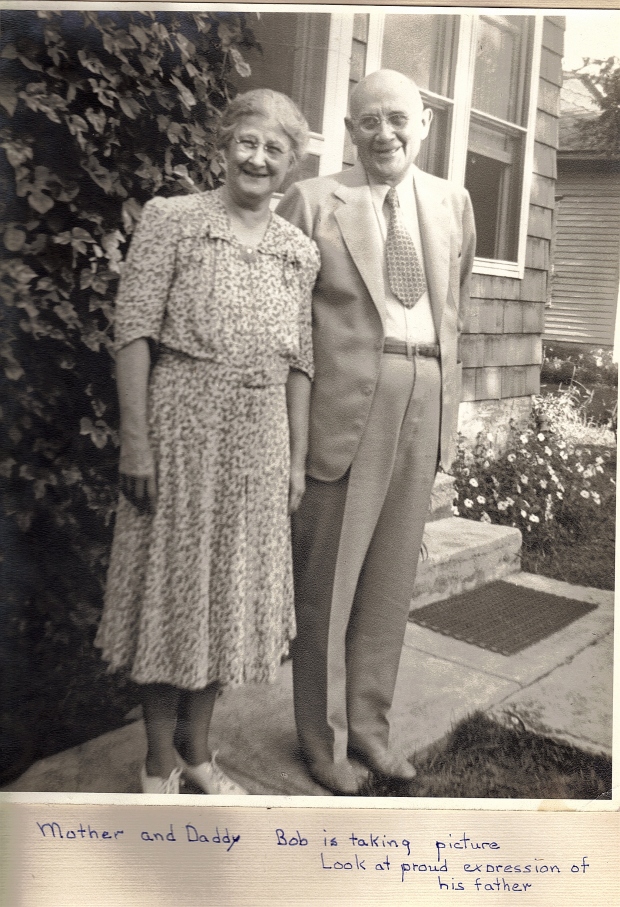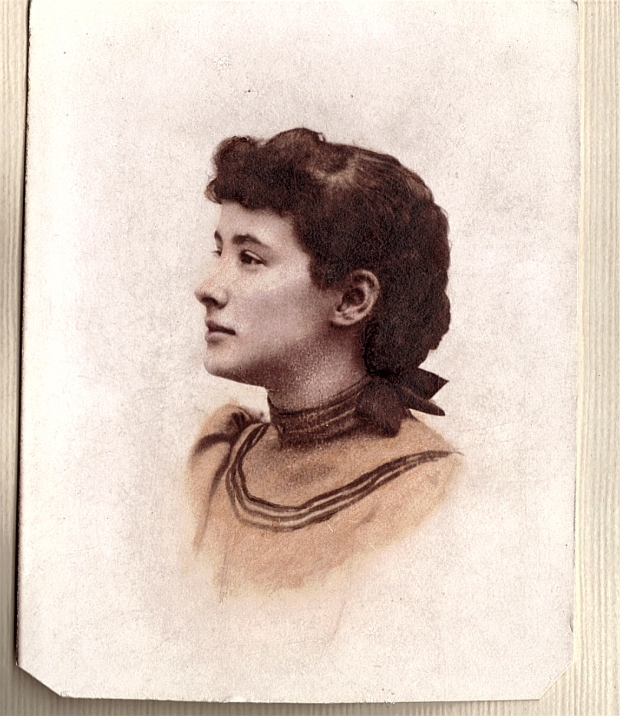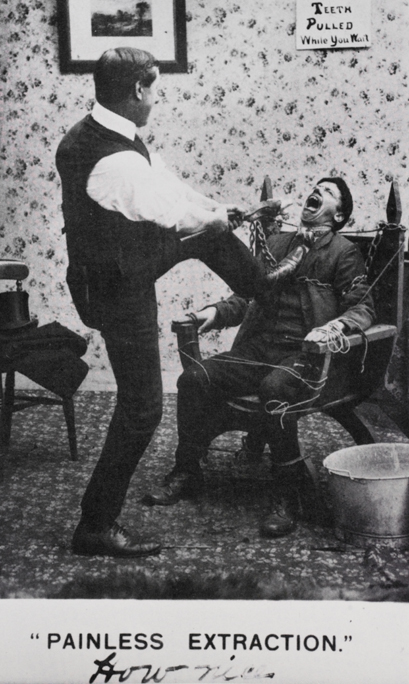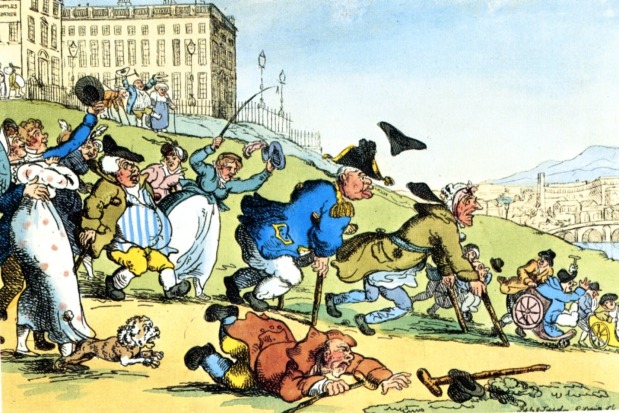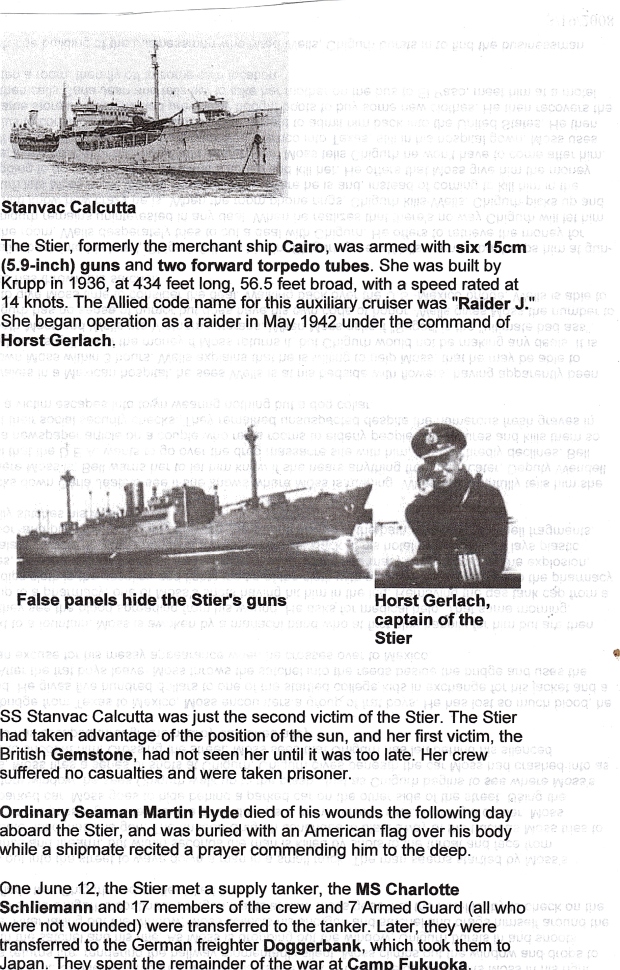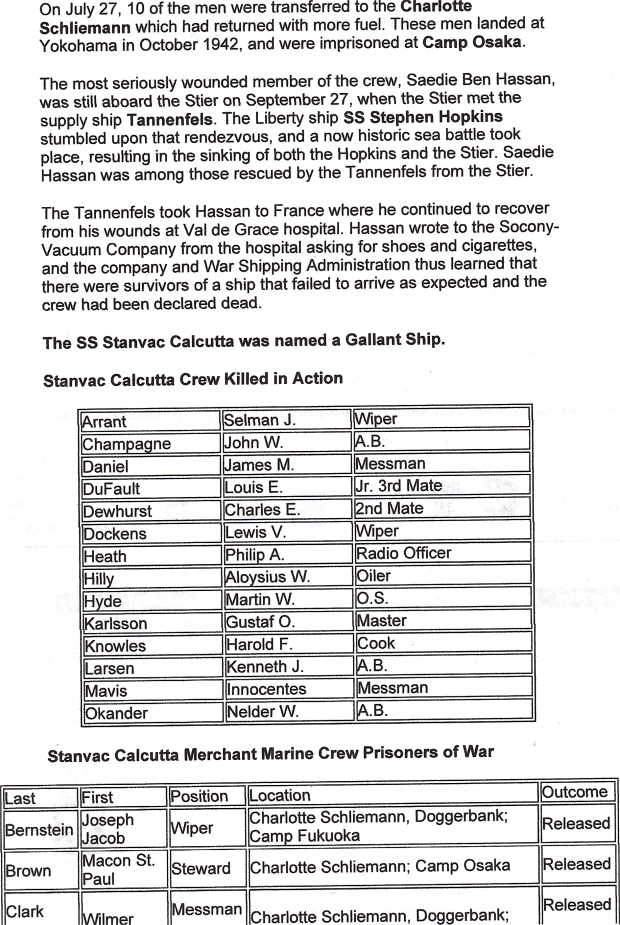And Some More Kelley Family Photos
I am having to cannibalize the photo albums because Mom glued some of the photos to the pages of the album. But I feel that it is worth it in order to share them.
I love this little photo of Uncle Bob. It looks like someone gave him a coat that was much too big for him.
I wouldn’t want to eat spaghetti or drink red wine while wearing this white uniform. The cleaning bills must have been horrific. And below these two photos is a little out of focus photo of the newlyweds, Uncle Bob & Aunt Helen. They certainly look frisky in this photo.
Below is a photo of Harriett and Ray taken on their first wedding anniversary.
Cousin John emailed me two photos today that I added to the blog. If any family members wish to add anything, please PLEASE do. I can also include you as a “member” of this blog and this will let write or post photos — anything except the power to delete the whole thing. So — you are formally invited. This might work for some family members who are interested but don’t have the time to create their own blog. After all, it is “Posts About Dead Relatives”.
Winfield, Kansas
I have so many wonderful memories of visiting Granny Kelley in Winfield. Janet Hodson, the retired Presbyterian missionary who had worked in India, moved in with Granny after Grandfather died. The family had always supported Janet in her mission work. After her retirement, she moved into 915 Mansfield to keep Granny company & to look after her. I was named for Janet Hodson. Below is a google photo of 915 Mansfield.
Janet was also born to an unmarried mother (in 1895) and her mother chose to keep her. Janet was badly mistreated by her grandmother and was often left locked in a closet. Her grandmother blamed the child instead of the child’s mother for her illegitimacy. (Info. from my mother Harriett) This may have led Janet to a life as a missionary.
Janet was very exotic to me for a lot of reasons. She had traveled all around the world, had a fabulous stamp collection, and she and her clothing smelled of sandalwood. It has always been one of my favorite scents because of Janet. When she retired, she brought home to Winfield several tables and chests made of sandalwood and this delicious odor permeated everything. I still have a sandalwood table and at least one elephant bell left from Janet. Janet left me her stamp collection in her will. Harriett, being the wise woman that she was, didn’t think that was fair to the other grandchildren and had the stamps sold and the proceeds given to the Presbyterian Missionary Efforts. I concur with her choice. Janet died in 1974 and who knows how I might have spent the money. I certainly wouldn’t have invested it. But because of Janet, I have always dreamed of traveling to India, but unfortunately haven’t yet made the trip.
The other grandchildren probably wonder why I know or remember this stuff. I was a clingy kid who didn’t venture far from my mother. I was a “radar” and heard everything. When Mom (Harriett) couldn’t find something, she would always ask me and I always knew. Adopted children often are a bit strange, and I know that I was very strange. There is is an attachment disorder that many adopted children have & I know I had a severe case.
Our grandfather Kelley had his office in this beautiful stone building on the right. He died before I was born, but my Mom (Harriett) often took me there for doctor or dental appointments and I can still remember the “doctor” scent. I don’t know if it was alcohol or ether, but it definitely smelled like a doctor’s office. It is amazing that doctor’s offices don’t smell like this anymore.
I think Mom (Harriett) told me that she was born at St. Mary’s Hospital in Winfield, KS. I’ll need to do some more research to prove this. But attached is a photo of St. Mary’s Hospital.

More Thoughts on Adoption, Adoptees and Adoptive Parents
My daughter called me tonight and we talked a bit about my blog. I said that I am trying to be sensitive since I am dealing with the lives of my very much loved relatives. Adoption as it pertains to me was due to babies being born to unmarried mothers. It was a hidden event during the forties, fifties & sixties. And since then, everything has changed. My adopted mother, Harriett, was very aware of this change in social mores and wrote me this poignant note in 1995. I clipped out the center part of the letter as it revealed too much personal information about one of her friend’s unmarried granddaughters who chose to keep her baby.
My parents never concealed the fact that I was adopted. All of the announcements contained the word adopted and it was never a secret in our family. Harriett & Ray were such great parents that I am surprised that Harriett would ever have any doubts in her skills. As a parent, though, I know I have many regrets as to my parenting skills (or total lack of). But as immature as I was, at least I got a chance to grow up with my daughter . And I am still sorry that I never created a fabulous baby book — but of course Nanny (Harriett) did that for me.
Adoption, Adoptees, Adoptive Parents
From 1940 until about 1970, up to 4 million mothers in the United States surrendered their newborn babies to the adoption process.
I’ve copied the text below from Wikipedia
Adoption is a process whereby a person assumes the parenting for another and, in so doing, permanently transfers all rights and responsibilities, along with filiation, from the original parent or parents. Modern systems of adoption, arising in the 20th century, tend to be governed by comprehensive statutes and regulations.
Beginning in the 1940s and 1950s, illegitimacy began to be defined in terms of psychological deficits on the part of the mother. At the same time, a liberalization of sexual mores combined with restrictions on access to birth control led to an increase in premarital pregnancies. In most cases, adoption was presented to the mothers as the only option and little or no effort was made to help the mothers keep and raise the children.
All of that said, I was an extremely lucky newborn and was adopted into a loving and secure family. While I was searching through old photographs today, I found the cross stitch picture that my Mom made for us. They truly felt this way about us and we never doubted their love or loyalty.
More Photos of Granny & Grandfather Kelley
I love looking at old family photos and having the internet and a computer has made sharing them so easy. I have a lot of Daddy Ray’s slides that I need to scan and make into digital files. All families are different in what they save and who ends up with the photos. I remember Granny Kelley having a drawer full of family photos in her attic. I wish I had been old enough at the time to appreciate what they were.
That said, I’ve scanned a few more of the photos that Mom (Harriett) saved.
Samuel Bonsall Romick, the father of Nell, Lida, Edna Romick & Mary Romick Kelley
My Granny Kelley (Mary Romick Kelley) had three sisters. Granny was the only sister who married. Granny (Mary) married Forrest Aaron Kelley in 1909. Nell, Lida and Edna chose to remain single and were “old maid school teachers” as they were called back then.
I have been working on putting together a “Page” family tree to include all of the family I gained through being adopted into a wonderful “Leave it to Beaver” type of family. Mom was never up making breakfast without being nicely dressed like June Cleaver. I was one lucky little “orphan” or “gutter snipe” in the words of the Willows Maternity Home. Ray & Harriett Page picked me up from The Willows on May 11, 1951.
Back to the Romick sisters — Nell (1874-1939), Lida (1887-1959), Edna (1889-1977) and Mary (1878-1963) were all trained as school teachers. There weren’t a lot of other choices back when they were young women.
The story from my mother (Harriett Kelley Page) was that Samuel B. Romick wasn’t an easy person. (By the way, my mom Harriett was named for her grandmother). Harriett Kenworthy Romick (Samuel’s wife) waited on him & he always took the best pieces of food first. Whether or not this had anything to do with his daughters deciding not to marry, we’ll never know. And perhaps that sister Nell preferred fishing & other male activities over crocheting or embroidery — who knows what those times were like for women who refused to fit the girly mode. Women had so few options. Or perhaps men shuddered at the other three sisters’ names. Mary is definitely a nicer name than Nell, Lida or Edna.
But I did find some interesting information about him today. If you have read any of my earlier posts, you’ll know that I am a huge fan of http://www.findagrave.com. I was searching for Samuel B. Romick and found that the volunteer who photographed the Romick grave site in Wheat Ridge, CO (a suburb of Denver) also went to the trouble of finding his obituary. That is so way beyond just being a volunteer. Thank you Wednesday, whoever you are.
Birth: Dec. 21, 1841
Harrisville
Harrison County
Ohio, USA
Death: Mar. 15, 1924, USABeaver City Times, Mar. 24, 1924 Samuel B. Romick, for fourteen years a resident and merchant of Beaver City, died at his home, 2205 ———————— 17, 1924. A man of good habits and strong ———— meaning of sickness until four years ago, when hardening of the arteries began sapping a life already extended well beyond the allotted span of “three score years and ten.”
He was born December 21, 1841 in Harrisville, Ohio. At the very beginning of the Civil War he enlisted serving in the army of the Potomac. Being captured at the battle of Stone River, he experienced and endured for several months the terrors, hardships and scanty food of Libby prison. He was in the famous March of the sea under General Sherman, and could fully appreciate the battle song, “Marching Through Georgia.” In his last days he seemed to live over again the scenes, struggles, and victoires of that testing period and when he could no longer speak he frequently gave the soldiers countersign.
He was in active business life for about fifty years, first in Iowa, and later in Kansas, Nebraska, and Oklahoma, retiring four years ago at Onadarko, Okla.
He was married in September 1873, to Miss Harriet Kenworthy of Oskaloosa, Iowa, who survives him, and is joined in mourning by four daughters: Misses Nell, Lida, and Edna, of Denver, who are popular and efficient teachers in the city schools, and Mrs. Mary Kelley, wife of Dr. Forrest A. Kelley of Winfield, Kans. His only living brother, Philip A. Romick, of Onadarko, Okla., could not be present at the funeral.
He had long been a member of the Masonic order, and it was especially fitting that he should be laid to rest in the section of Crown Hill Burial Park reserved for Masons, where every new grave is an added consecration to a spot already made sacred by the “broken columns” of many of the brethren. Honor to his memory.
Kelley Family Photos
My Granny Kelley had twelve grandchildren. We were close in age and loved visiting each other during the summer. This photo was taken at Granny Kelley’s home in Winfield, Kansas in 1952. I am in the back row between my cousin Mark and cousin Tim. I would have been one year old. In the front row from left to right — Christie, Joe, baby Barbara on Susan’s lap, Granny holding baby Peter, next Mary and behind Mary is Pat. And to the right is John holding baby Martha.
I left my adopted Mother’s script on the bottom of the photo. She had very pretty and distinctive handwriting and printing. My mother, Harriett, is in the front left bottom corner. She labeled herself as “Mom”. I don’t know when this photo was taken. Forest Aaron Kelley was a doctor in Winfield, Kansas. He was an early believer in the danger of smoking. When he attended his Lodge meetings, he would sit near an open window while the rest of the men smoked cigars, cigarettes & pipes. His initials are F.A. Kelley, so the men started calling him “Fresh Air Kelley”
John W. Dickinson, (1843-1916). Dentist in Brooklyn, New York
John W. Dickinson fought in the Union Army for four years. He originally enlisted on May 6, 1861 and then reenlisted on Aug 22, 1862, and stayed until his term of service ended on June 19, 1865. He spent the last several months of his enlistment in Ward United States Army General Hospital, Newark, NJ. I haven’t been able to find out what happened to him, but he probably became ill as there were so many communicable diseases among the soldiers during the Civil War.
John W. married Emma Woodruff of Elizabeth, NJ on September 16, 1874. He was thirty one years old when he married. The Brooklyn Directory lists John W. Dickinson as residing at 522 5th Ave., Brooklyn, NY in 1884 and lists his occupation as a Dentist. The original building has been torn down, but it is now a commercial area in Park Slope.
His daughter, Mabel Dickinson, had this photo of her father’s dental office among her belongings.
Below is a comic post card depicting “Painless Extraction”
They Shoot Horses, Don’t They? (refering to horses with broken legs)
I’m not ready to make plans for the upcoming holidays. I broke my left leg, (fibula, the small bone on left side) on November 5, 2012 and I’m in a cast to the knee. I have another appointment with the orthopedic doctor in two weeks. As of today, I am lucky to make it from the computer to the kitchen to the bathroom and back.

So, I am having a difficult time getting excited about holiday travel. Maybe I’ll be walking by then — but I really can’t plan that far ahead. I’m excited that someone is willing to pick up my sorry self and take me to the club this afternoon to play bridge.
I love this photo on the outside of the box my cast protector came in. I don’t think it represents the sort of individual who would buy this product. Seriously, if I looked this happy I’d be on my way to Bermuda or the Bahamas! (Especially if I looked like she does.) But this protector has at least given me a chance to take a shower.

At least I don’t live in the early pioneer days. All they could do was to find a couple of sticks, push the bones together as best they could and then tie some rags around the whole thing to keep the bones in place until they hopefully healed back together.
Bonesetting as a profession was often left to woman.
One famous bonesetter was Sarah Mapp, or “Crazy Sally” as she was often called.
Sarah Mapp was born around 1706, daughter to a bonesetter, and took up her father’s trade. In 18th Century England bonesetters were medical practitioners found in many towns. They reset dislocated hips and shoulders, re-broke and set poorly mended fractures, and sometimes effected various other kinds of cures through bone manipulation, anticipating chiropractic. Resetting of dislocated limbs required a great deal of strength and in many towns the job was given over to the strongest man, usually the blacksmith. Sarah was very strong. She was also cross-eyed, very fat, and “hideously ugly” from contemporary reports. Well aware of her appearance, Sarah capitalized on it, calling herself Crazy Sally or Crosseyed Sally in her public reports.
But then, if I lived in England during those times, I could hitch a ride over to the town of Bath to partake in the healing hot waters at the spas.
Joseph J. Bernstein, Another Tough World War II Veteran. He lived May 5, 1923 – May 29, 2008
Joseph (Jack) Bernstein was my daughter’s grandfather & my father-in-law. Jack was tough. He smoked Marlboro Reds when I first met him, had rough hands and an iron handshake. Jack was probably always tough, but especially since he survived being captured at sea by the Germans and then being turned over to a Japanese war camp to spend the rest of WWII. This is for Jack, R.I.P. and we miss you.
His son wrote
Thursday, Jack was declared dead . . .for the second time. He was 85. Sixty-five years ago, another article appeared in the Kansas City Star; the headline read, “And a Boy Dies At Sea.” It told the story of a young Kansas Citian in greasy overalls working on a merchant marine tanker — the boy and the tanker lost at sea when an enemy torpedo struck. Insurance benefits were paid and he was given up for dead, by all but his family. “We were deeply grieved to hear of the death of your son,” the letter to his mother read. “He set an example in heroism and patriotism for all of us.”
The text below is copied from http://www.usmm.org/calcutta.html
It wasn’t until 1943 that Washington learned that 27 crew members of the Calcutta were alive and prisoners of war at Camp Fukuoka in Japan.
He often remarked that he was living on borrowed time. At 11:35pm on May 29, 2008, he opened his eyes for the last time and closed them. All who knew him will miss him dearly.
